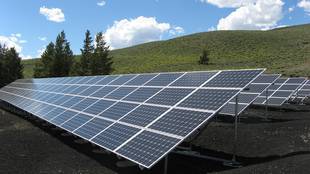
Nature Of Energy
Energy is simply defined as the ability or capacity to do work. Without energy, we could not be able to do anything. Our body’s cells need energy to work. We know very well that the ultimate source of energy is the sun. But the energy coming from the sun is utilized to make so many new things around us. All the convenience that we are enjoying was made possible because of energy.
There are two states of energy. All the forms of energy that you can think of can be classified into one of the two states of energy: kinetic and potential energy. Kinetic energy is energy that a moving object has due to its motion or simply referred to as energy of motion. Potential energy, on the other hand, is energy of position or stored energy. All objects have energy, only that some are in motion while some are stored. Any organism doing work is using energy. Energy therefore is very much related to work. Energy is thus defined as the capacity to do work. Objects can gain energy when work is being done on them. If work is done on an object, energy is given to the object. Because of the direct connection between work and energy, energy is measured in the same unit as work. Energy is measured in joules (J).
Forms of Energy
Energy appears in many forms. There are five (5) main forms of energy. These are mechanical, heat, chemical, electromagnetic and nuclear.
1. Mechanical Energy
Any moving matter has energy. The energy associated with motion is called mechanical energy. Water in a well, wind, automobile traveling at a certain speed, all of this has a great amount of mechanical energy. Since moving objects produce sound, it is therefore a type of mechanical energy. Blood flowing through the blood vessels also has mechanical energy.
2. Heat Energy
The internal motion of the atoms is called heat energy. All matter is made up of atoms and these atoms are in constant motion. The faster the particles move, the more hear energy is produced. This is the reason why rubbing two objects together could produce heat and even fire. Friction converts mechanical energy found in an object into heat energy.
3. Chemical Energy
What holds atom together? We are aware of what we call chemical bonds. In these bonds are stored great amounts of chemical energy. When the bonds are broken, the chemical energy is released. The fuel in a car, for example, stores chemical energy. When fuel is burned, chemical energy is released.
4. Electromagnetic Energy
Electric charges that are moving have the ability to do work. There are two (2) common kinds of electromagnetic energy: electricity and light. Power lines, for example, carry electromagnetic energy into our homes in the form of electricity. Electromagnetic energy is also carried by x-rays, radio waves and laser lights.
5. Nuclear Energy
The central part of an atom is the nucleus, the source of nuclear energy. This energy is released when the nucleus splits but it is released in the form of heat or light. When nucleus collides with one another or join in the process known as nuclear fusion, nuclear energy is also produced. Just like how the sun produces light energy. The nucleus of hydrogen atoms fuses and collides to form the helium nucleus. Nuclear energy is the most concentrated form of energy.
Energy Conversions
We know very well that the ultimate source of energy is the sun. It gives us light as well as heat. The light coming from the sun enables the plant to produce food, primarily in the form of chemical known as glucose. This happens during the process known as photosynthesis. Notice that these are all forms of energy. Solar products convert the energy of sunlight directly into electricity. Nuclear energy coming from the sun to light and heat energy. All of these changes in the form of energy are called energy conversions. Energy can be transferred from one object to another and energy can be changed from one form to another.
We have already noted potential and kinetic forms of energy. One of the most common energy conversions involves the changing of potential energy into kinetic energy or vice versa. A ball held in the air has potential energy. As it falls, it losses potential energy because its height decreases. At the same time, its kinetic energy increases because its velocity increases. In this case, potential energy is converted into mechanical energy.
What other examples of energy conversions do we see around us? In an electric motor, electromagnetic energy is converted to mechanical energy. Chemical stored in a battery is converted to electromagnetic energy.
Conservation Of Energy
We now know that energy is converted from one form to another. During this process of conversions, energy is never lost. When energy is converted from one form to another, no energy is gained or lost in the process. The law of conservation of energy states that energy can be neither created nor destroyed by ordinary means. Energy can only be converted from one form to another. This energy conversion occurs without a loss or gain in energy.

















